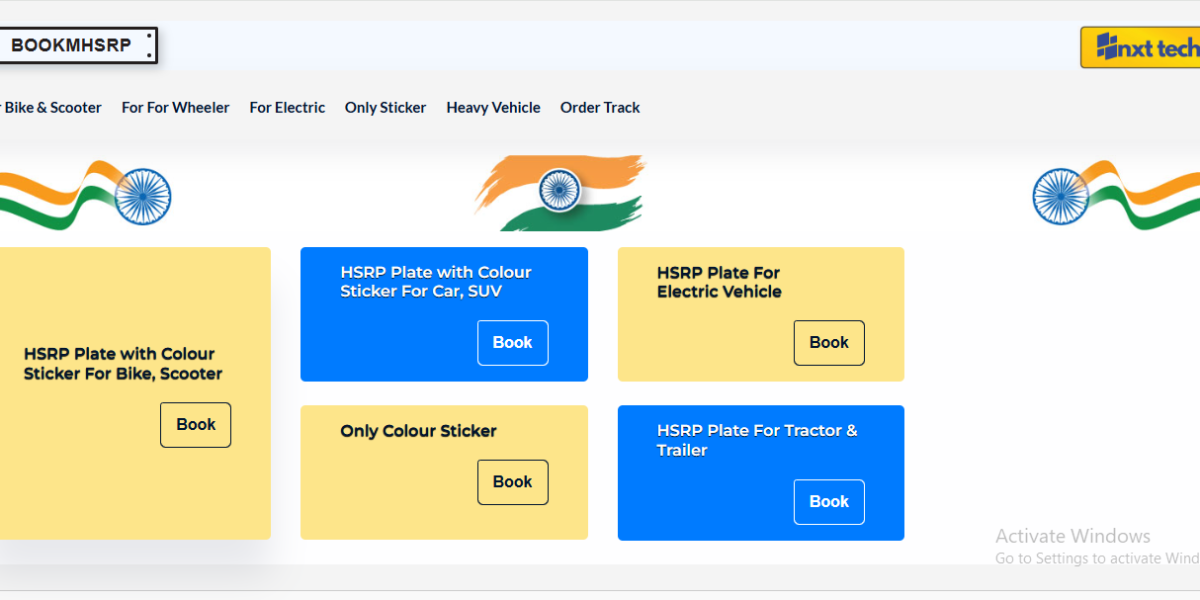As road safety becomes an increasing priority for governments across the world, new technologies and regulations are being implemented to ensure better compliance and tracking Hsrp registration . One such initiative in India is the HSRP registration, which refers to the mandatory registration of High Security Registration Plates (HSRP) for vehicles. Introduced by the Ministry of Road Transport and Highways (MoRTH), HSRP aims to bring uniformity and enhance the security of vehicle identification.
In this article, we’ll explore what HSRP registration is, why it’s important, how you can apply, and the legal implications of non-compliance.
What is HSRP?
High Security Registration Plates (HSRP) are standardized number plates that come with enhanced security features. Unlike the traditional plates, HSRPs are made of aluminum and have several tamper-proof features including:
-
A unique 10-digit laser-etched code
-
A hot-stamped chromium-based hologram of Ashoka Chakra
-
A hot-stamped registration number with IND (India) inscription
-
A non-removable snap lock that makes tampering difficult
-
A color-coded sticker indicating the type of fuel used
The primary goal of HSRP is to curb vehicle theft, prevent the use of duplicate number plates, and make vehicle tracking easier for law enforcement agencies.
Why is HSRP Registration Mandatory?
The Supreme Court of India made HSRP mandatory for all vehicles sold before April 2019, while vehicles sold after that already come equipped with these plates from the manufacturer. The HSRP registration ensures:
-
Standardization: All vehicles have a uniform number plate, reducing confusion and fraud.
-
Security: Anti-theft features make it harder for criminals to use stolen vehicles.
-
Digitization: Each HSRP is linked to a centralized database for better monitoring.
-
Legal Compliance: Non-HSRP vehicles can attract penalties and may not pass traffic checks.
Who Needs to Register for HSRP?
If you own a vehicle that was registered before April 1, 2019, and it does not have a high security number plate, you need to register for HSRP. This applies to both private and commercial vehicles, including two-wheelers and four-wheelers.
Vehicles registered after this date usually have HSRPs installed during purchase and do not require separate registration.
How to Register for HSRP
HSRP registration can be done both online and offline, depending on the state you reside in. Here’s a step-by-step guide for online registration:
Step 1: Visit the Official HSRP Portal
Each state has authorized HSRP providers. Popular portals include:
-
https://www.bookmyhsrp.com (For Delhi, UP, Haryana, etc.)
-
State-specific transport department websites
Step 2: Enter Vehicle Details
You’ll need to provide:
-
Vehicle Registration Number
-
Engine Number
-
Chassis Number
-
Owner Name and Contact Details
Make sure the details exactly match your RC (Registration Certificate).
Step 3: Choose Appointment Slot
Select your nearest dealer or RTO location for plate installation and book an appointment. You’ll be given a date and time to visit the center.
Step 4: Make Payment
The fee for HSRP varies by vehicle type and state, but generally falls within:
-
₹300 – ₹600 for two-wheelers
-
₹600 – ₹1,100 for four-wheelers
After payment, you’ll receive an acknowledgment receipt and booking ID.
Step 5: Installation
Visit the selected fitment center on your appointment date. The HSRP will be installed using snap locks and the color-coded sticker will be applied to the windshield.
Benefits of HSRP Registration
HSRP registration offers multiple benefits to both vehicle owners and the authorities:
1. Theft Prevention
The unique identification code and tamper-proof design make it difficult to replace or forge plates.
2. Faster Tracking
Law enforcement can quickly trace stolen or wanted vehicles using the centralized database.
3. Easier RTO Verification
The plates are registered in a unified system that links with your vehicle and owner details.
4. Legal Safety
You avoid fines and legal trouble by complying with the mandated rules.
5. Pollution Identification
Color-coded stickers allow easy identification of fuel type, aiding pollution control efforts.
Penalties for Not Registering HSRP
Failing to get HSRP registration can result in fines and penalties. As per the Motor Vehicles Act:
-
Fines can range from ₹5,000 to ₹10,000
-
Vehicles may be detained or seized during traffic checks
-
Repeat offenders may face more severe consequences
Some states have even launched drive campaigns, checking vehicles for HSRPs and issuing challans on the spot.
Common FAQs on HSRP Registration
1. Is HSRP mandatory for all vehicles?
Yes, it is mandatory for all vehicles registered before April 2019. New vehicles already come with HSRP installed.
2. Can I install HSRP on my own?
No. HSRPs must be installed only at authorized centers to ensure secure fitment and registration.
3. How long does it take to get the HSRP installed?
Usually, the process from booking to installation takes 3–7 days depending on demand and location.
4. Is the color-coded sticker part of the HSRP?
Yes. The fuel-type sticker (green for electric, orange for diesel, blue for petrol/CNG) is mandatory for four-wheelers and is provided along with the HSRP.
5. What happens if my plate is damaged or stolen?
You can apply for a replacement through the same portal. Police verification may be required in case of theft.
Conclusion
HSRP registration is not just a legal formality—it’s an important step toward safer, more secure transportation. With increasing instances of road violations, stolen vehicles, and traffic-related crime, adopting HSRP can significantly aid in enforcement and accountability. For vehicle owners, registering for HSRP ensures compliance, avoids fines, and contributes to broader road safety goals.












